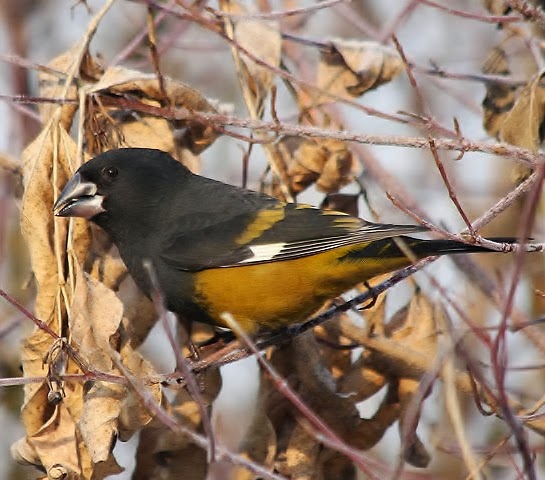 |
| Photo by Isabekov Askar (Birds of Kazakhstan) |
Common name:
white-winged grosbeak (en); bico-grossudo-d’asa-branca (pt); gros-bec à ailes blaches (fr); picogordo aliblanco (es); wacholderkernbeißer (de)
Taxonomy:
Order Passeriformes
Family Fringillidae
Range:
This species is found in central Asia, from northern Iran, through Afghanistan and Turkmenistan, and into south-eastern Kazakhstan, western and central China, Nepal and northernmost India and Myanmar.
Size:
Thee birds are 21-24 cm long and weigh 56-62 g.
Habitat:
The white-winged grosbeak is mostly found in high-altitude scrublands and also high-altitude temperate forests such as juniper and juniper-spruce. They are present at altitudes of 2.800-4.600 m.
Diet:
They feed mainly on the berries of dogwood Cornus sanguinea of randia Randia tetrasperma and common juniper Juniperus communis, with a complement of conifer seeds, nuts and seeds of herbaceous plants such as Rumex sp.
Breeding:
White-winged grosbeaks breed in March-September. The nest is built mostly by the female, consisting of a deep cup made of twigs, grass stems and sometimes moss and dry leave, and lined with pieces of bark. Most often it is placed in a juniper tree, up to 2 m above the ground, but may be placed in larger tree up to 20 m above the ground. The female lays 2-5 pale greenish-grey eggs with black and purple spots, which are incubated by both parents for 15-16 days. The chicks are fed by both parents and fledge about 20 days after hatching.
Conservation:
IUCN status – LC (Least Concern)
This species has a very large breeding range and is described as common or locally common. The population is suspected to be stable in the absence of evidence for any declines or substantial threats.







